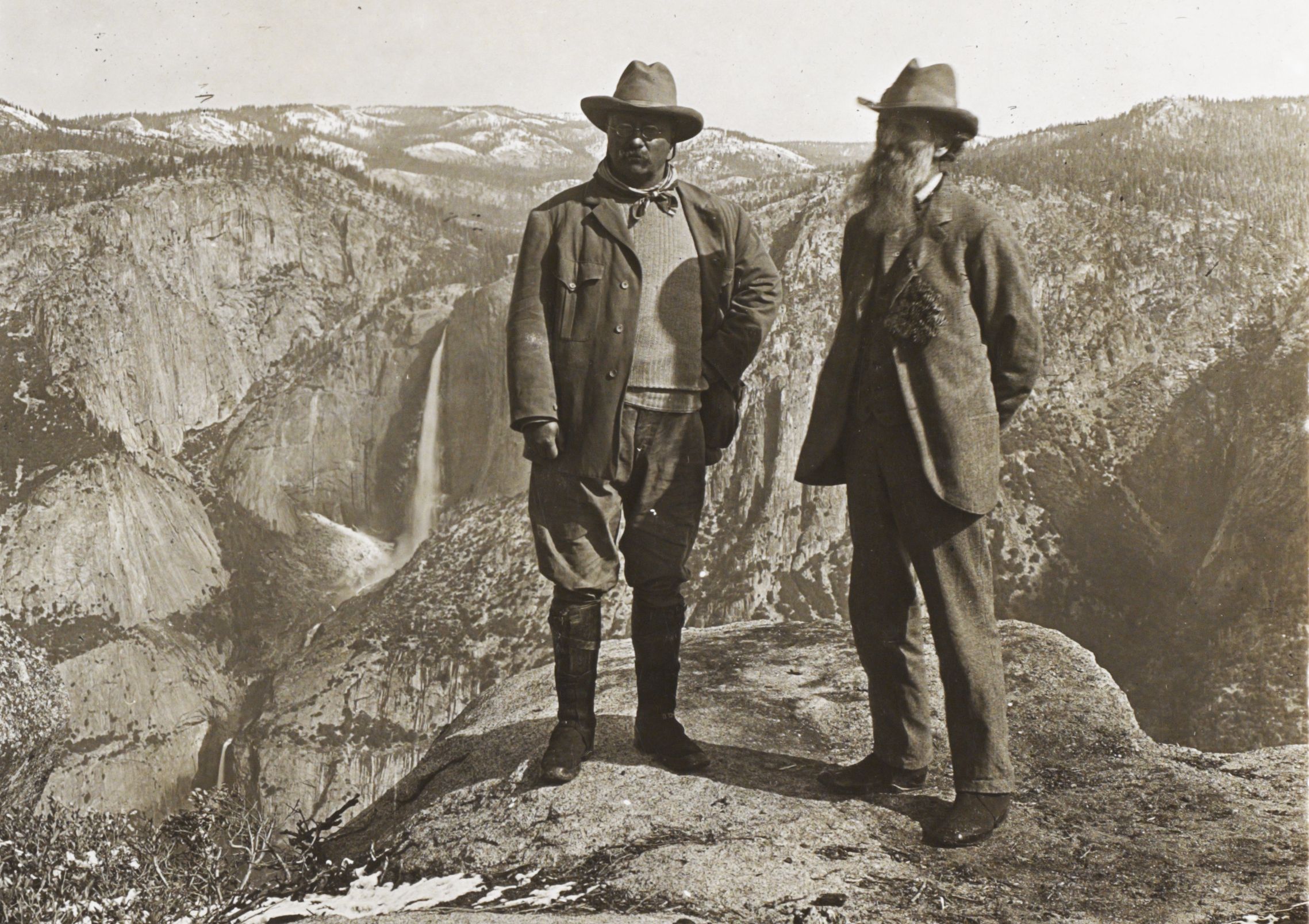Authors:
Historic Era: Era 7: The Emergence of Modern America (1890-1930)
Historic Theme:
Subject:
September 2023 | Volume 68, Issue 6


Authors:
Historic Era: Era 7: The Emergence of Modern America (1890-1930)
Historic Theme:
Subject:
September 2023 | Volume 68, Issue 6

Editor's Note: Dean King is the author of twelve books, including, most recently, Guardians of the Valley: John Muir and the Friendship that Saved Yosemite, from which he adapted this essay. More information about King and his books is at: www.deanhking.com.
Whether the anonymous photographer felt the conceivably immense pressure, we will never know. But, with the head of the nation and the soul of its preservation movement – both rugged, demanding, and outspoken men – paired together for a brief time, posed against one of the nation’s most transcendent and iconic landscapes, after the president's long journey by train, horseback, and on foot, the stakes in making a good image were high.
The photograph — the official portrait of John Muir, age 65, and Theodore Roosevelt, age 44, at Overhanging Rock — would come to symbolize the young president’s love of nature and would serve as a memorial to the meeting of the two indomitable men who had camped there together the night before. Yet all might not have been as copacetic as it appeared, or as Roosevelt, who was laying the groundwork for his campaign for a second term, would later lead us to believe.
The Roosevelt-Muir photo op took place in 1903, five decades after the California Gold Rush, when the first white men to enter the magnificent valley — the Mariposa Battalion, a volunteer army of prospectors, ranchers, and roughnecks led by the trader James Savage, who had quarreled with the local Miwuk Indians — went there in the spring of 1851 to rout the tribe from its stronghold, a remote valley and bear den they called Yosemite.
Reaching what became known as Inspiration Point, at least one of them, the gold miner L. H. Bunnell, realized the specialness of this place: “Haze hung over the valley — light as gossamer — and clouds partially dimmed the higher cliffs and mountains,” he explained. “This obscurity of vision but increased the awe with which I beheld it, and, as I looked, a peculiar exalted sensation seemed to fill my whole being, and I found my eyes in tears with emotion.”
Four decades had passed since President Lincoln had signed a bill granting Yosemite (Miwuk for “those who kill”) Valley and the Mariposa Grove of Big Trees to the State of California to preserve and protect “for public use, recreation, and enjoyment, inalienable for all time.” This Yosemite grant, preceding the creation of Yellowstone National Park by eight years, was the first